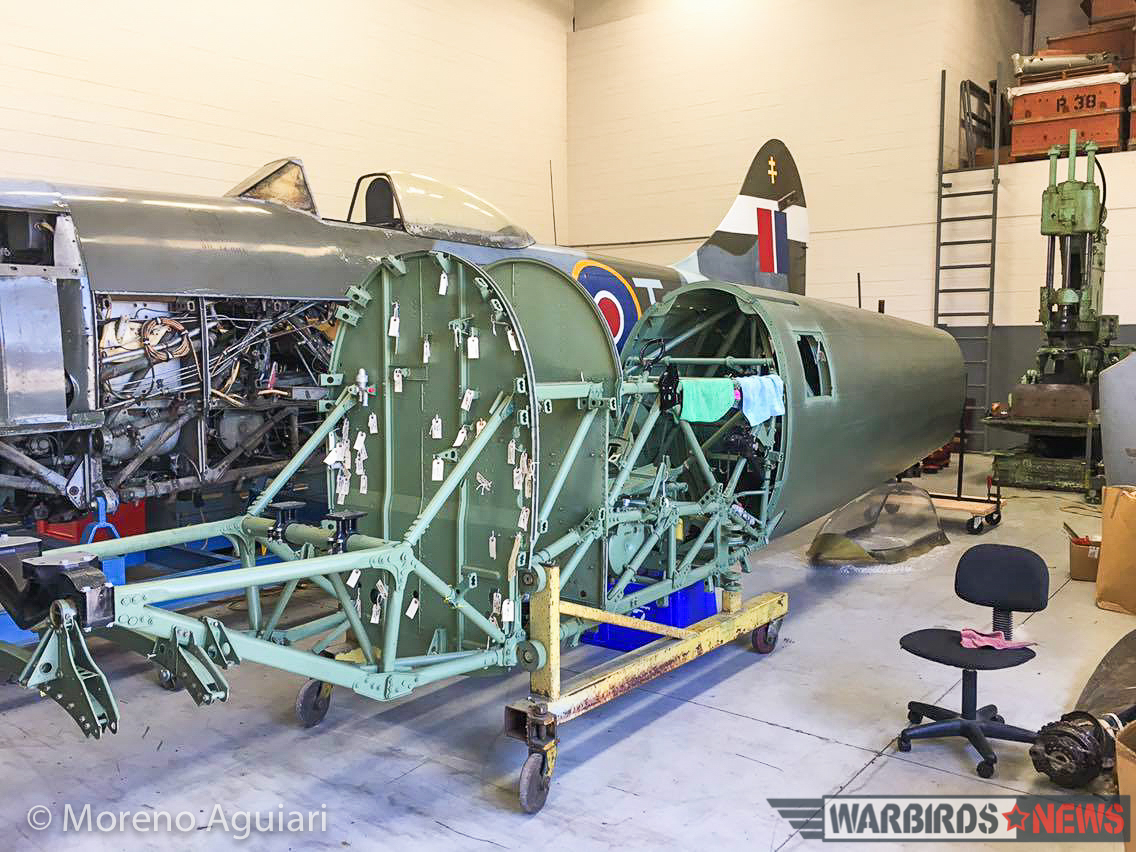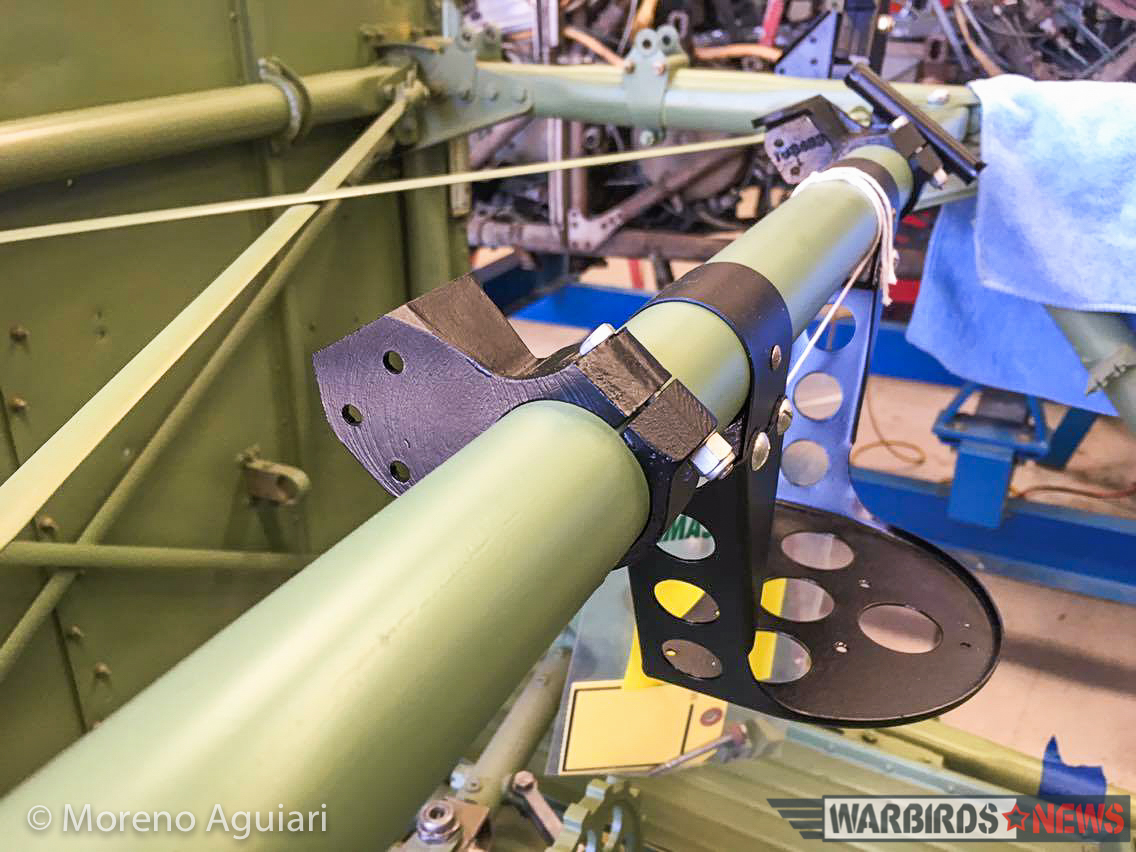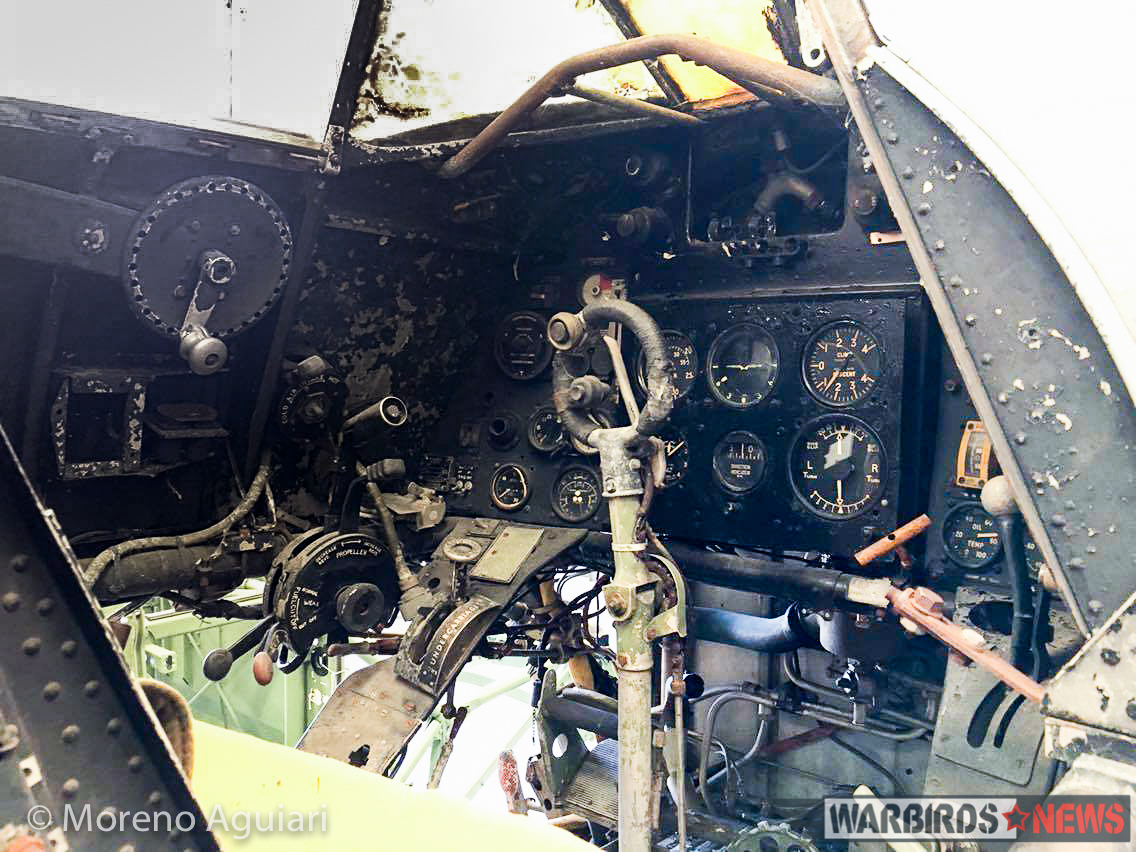
Tempest Fugit – The Resurrection of Two of Hawkers’ Finest
by Richard Mallory Allnutt
The Hawker Tempest is one of the most revered ground attack aircraft of WWII, and yet so few of them survived beyond the mid-1950s. Despite several efforts to resurrect one of the awesome beasts to airworthy condition over the past four decades, none have made it past the finish line so far. However, a dedicated ex-pat Englishman, Andy Salter, is attempting to breathe new life into not just one, but two of these charismatic fighters at Kermit Weeks’ facility in Polk City, Florida. Mr. Weeks’ Tempests are the Napier Sabre-engined Mk.V variant, EJ693, and the Bristol Centaurus-powerd Mk.II prototype, LA607. Interestingly, the Tempest II never saw combat during WWII, unlike the Mk.V, which was actually the first of the type to enter service, beginning in January, 1944. They were the scourge of Nazi ground forces in Europe during the latter stages of the war, and one of the few aircraft fast enough to chase down the V-1 flying bombs as well.
As already noted, the Hawker Tempest is a rare breed indeed, with nine complete Mk.IIs and just two Mk.Vs extant. Other than LA607, all of the surviving Tempest IIs are former Indian Air Force examples, while the Tempest V’s served their time exclusively in the RAF. That being said, EJ693’s wings are actually from a former Indian Air Force Tempest Mk.II, and as such, have required modifications to bring them up to standard. The aircraft has a fascinating history, which is really beyond the scope of this article, but suffice to say it saw 21 combat missions with RAF 486 Squadron, mostly over the low countries. EJ693’s final combat patrol ended with a belly landing in Holland due to engine trouble, and thus her wartime flying days were over. Rather than scrap the Tempest though, an RAF team recovered the aircraft for further use as an engine test bed with RAF 151 Repair Unit at Wevelgem, near Brussels, Belgium. The outfit would mount newly rebuilt Napier Sabres to the ground-bound EJ693, and run the engines through their paces before returning them for front-line use. Following the war, the Technical College in Delft, Holland acquired EJ693’s fuselage, which ensured her eventual preservation. For a more detailed look at her history, please click HERE to visit Christer Landberg’s fabulous website dedicated to the Hawker Tempest.
While the Tempest II variant never saw combat in WWII, LA607 was the marque’s second prototype to fly, in September, 1943. She served primarily as a test aircraft with the Bristol Aeroplane Company during their development of the Centaurus radial engine, which powered the type in service. Following active use, LA607 passed on to the Cranfield College of Aeronautics, a prestigious British aviation university, which has become famous in the warbird world for having saved so many important British military aircraft. The Skyfame Museum acquired her in 1967, but when that museum folded in the early 80s, she moved to the Imperial War Museum at Duxford for display. Mr. Weeks acquired the aircraft at auction in 1983, and stepped in to provide the aircraft a new home in America. She has resided at several locations in Florida since then, finally moving to Polk City in the summer of 2014. The aircraft is in near-time-capsule condition, and will serve as an important reference during EJ693’s restoration, before undergoing the same treatment herself.

Kermit Weeks has owned EJ693 for more than 20 years. She spent most of that time as an on-again-off-again restoration project at Personal Plane Services in the UK, where a good deal of her airframe received attention. This work included the recreation of the Tempest V’s iconic and famously complex radiator chin scoop, from scratch, by master sheet metal worker Mike Lamb using the RAF Museum’s example as a template. Much remains to be done though, including refurbishment of nearly all the myriad systems and internal fittings.
In 2015, Mr. Weeks decided to bring his prize home to Polk City, and she made the journey by sea last October. Ironically, EJ693 was one of the first aircraft Andy Salter was involved with. In a recent conversation with WarbirdsNews he said, “When I started 35-40 years ago, this was almost the first aeroplane I got into, because I worked for Bianchi [at Personal Plane Services] all those years back… in the early 80’s. This just sat there. I knew what it was, but I was a kid. I HAVE to finish this [the Mk.V]… I have to at least get it to the point [where it’s ready to fly].”
Andy Salter began sifting through the collection of parts and drawings that previous owner, Nick Grace, had gathered over the years. Salter started actively working on the project soon after. In January, 2016 he had the fuselage from LA607 moved in beside EJ693 to act as a quick reference for work on the Tempest V. While EJ693’s airframe is more or less structurally complete, Andy Salter has found that a fair bit of her fuselage truss needs reworking. “I’ve taken a lot of stuff off and refinished it,” he said, “because these tubes, they’re all steel. A lot of them had the light grey green, the cockpit green [paint]. There was no primer under it, so it was all rusting through. So I’ve redone a lot of that. The entire aeroplane was cockpit green right the way through, which it never should be. Most of the inside is this satin black,” he said pointing at the Tempest II’s untouched structure. “None of this stuff is on here permanently,” he continued. “I’m going to have to ‘black’ the cockpit interior at some point.”
Salter reckons that under the current circumstances, with only him working on the aircraft, that it will easily be ten years before he finishes the Mk.V, and that’s probably without working on the Napier Sabre engine. He doesn’t know whether he will be allowed to work on the Sabre, but he hopes so, because “that really is ultimately what I do. I am an engine guy. That’s why I rebuild a majority of Kermit’s more unusual engines…”
When asked if he really wants to tear down the massive 24-cylinder Sabre, Salter immediately responded, “I really do, and the other thing I want to do is to make the 200 plus unique tools and many more specialized cutters, fixtures etc., which will have to be produced as needed for it too. Because it’s all documented… Some of them I’ve already got. I’ve been collecting them, but…. there are some things that are fairly daunting. There’s basically a Sabre equivalent of the [Rolls-Royce] Merlin jacks, where you jack the banks off the top of the cases…There’s one for that engine and I swear it’s the size of a table tennis table. It’s huge! … I wanna do that!” Salter doesn’t want to deal with the Sabre’s massive, complex carburetor though. He says he’ll happily hand that over to Martin King, the carburetor guru at Mike Nixon’s Vintage V-12s engine shop in Tehachapi, California. Salter laughs, “I will say to Martin… there it is. Knock yourself out!” He thinks the biggest issue with the Sabre will be getting the drive train for the 24 sleeve valves sorted. At the close of our conversation, Salter laughs and says pointing at the Sabre, “That’s the funny thing to end the day on. There’s no electric starter that will fire this thing up.” It will have to be a Coffman starter with Cordite cartridges, “and where the hell do you get those things from these days. It’s a two gauge shotgun shell with no ammunition in it.” Like most things in the warbird world, someone will probably have to make them by hand, at great expense.
While it is clearly going to be a long while before even the first Tempest is ready to fly again, we must understand the enormous commitment of Mr. Weeks’ resources, financial and otherwise, that these projects demand. He’s already lavished a small fortune on the Tempest V, and still has to invest considerably more. Any way you look at it though, it is great to see progress underway on these two beauties, and it will be a magnificent day when they fly again. WarbirdsNews will keep our readers up to date with periodic reports on their restorations. We must offer our deep thanks to both Andy Salter and Kermit Weeks of course for taking the time to talk with us, and wish them well in their endeavors!
































